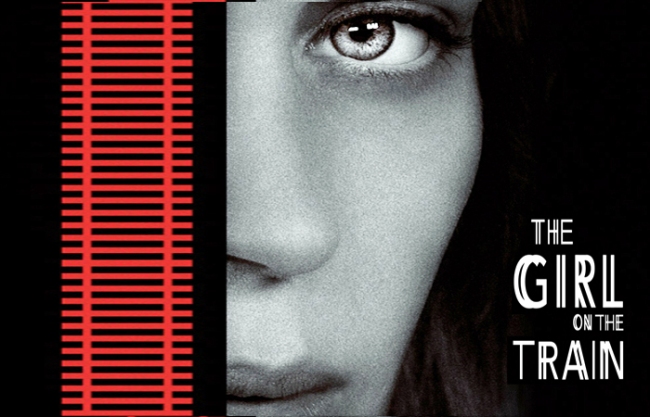 October
23
October
23
Tags
The Girl on the Train (2016)

What could you do with the power to create another person’s memories? Perhaps make them remember you as always wonderful or themselves as always hopeless. This unusual premise runs through The Girl on the Train (2016), its plausibility resting on the victim being in such an alcoholic haze that their regular blackouts become blank mental spaces to be filled with memories chosen by someone close. This twisted relationship between memory and truth filters the story in ways that produce a novel viewpoint in a traditional thriller.
Rachel’s alcoholism started when IVF failed and it eventually ended her dream marriage. She lives off her alimony and spends her time as a train passenger voyeur who watches other people in fantasy worlds while she sips vodka out of a sports bottle. Every day she rides past her former neighbourhood just gazing out windows and she becomes fixated on a couple that appear to have everything. When she notices a new man on the scene she is driven compulsively to explore what happened. In the process, we become witness to a triple set of simmering relationships that turn dangerous when a babysitter’s body is found gruesomely buried nearby. Rachel is implicated when, unable to account for her whereabouts, she becomes a murder suspect.
Constant inebriation makes an unreliable narrator and Rachel’s hold on reality regularly dissolves while frequent flashbacks create disorientation amidst the detail of who is being unfaithful or untruthful with whom. The narrative structure is both complex and well-constructed. It is like a jigsaw puzzle being assembled by first laying out the most distant pieces in isolation, then randomly laying out more on the board’s periphery. All the time we are uncertain whether Rachel is sane or sozzled as, one by one, clues about what happened on the night of the murder are laid out with surgical precision in the finest tradition of a Hitchcock thriller.
Emily Blunt’s performance drives this film despite the incongruity of her unexplained Britishness in America. A drunk narrator does not readily earn audience sympathy, but Rachel’s pained eyes and curious mournfulness are engaging. The soundtrack adds a psychological thriller edge to a well-paced tale despite Rachel’s permanent introspection. While the film has a strong support cast, no other character is developed beyond a two-dimensional persona in what is a female-driven story with a spectacular finale of feminine vengeance. The last piece of the jigsaw drops in with a satisfying thud.

Director: Tate Taylor
Stars: Emily Blunt, Haley Bennett, Rebecca Ferguson

Wow! Awesome review! I am super excited to see this movie!
Also it’s so cool to see movie reviews! 😀 Love your blog!
LikeLiked by 1 person
Love to see you comment here Bookneeders; thank you.
LikeLiked by 1 person
I did not think too much of this popular book. However, I listened to it on tape, which was, perhaps not the best delivery method for a story as convoluted as it is. To make matters worse, I listen at night, which means I drift off to sleep at crucial moments and then have to backtrack to fill in the gaps. Your review of the film makes me curious and ready to give the story a second chance.
LikeLike
I could not imagine following this plot as an audio book; there are too many visual clues that hold the story together. The movie is quite engaging right up to its unexpected finale.
LikeLiked by 1 person
Pingback: Movie Review: The Girl on the Train | thebuzzinsider
Really enjoyed this movie as well. Went into it not expecting much and was surprised and pleased with its exploration of identity. I felt it handled the three female leads, who’s characters are usually just throw away female stereotypes, with more depth and sensitivity than most films.
LikeLiked by 1 person
I agree movieproblem; this is definitely a female-led narrative that empowers the female leads. Thanks for commenting.
LikeLike